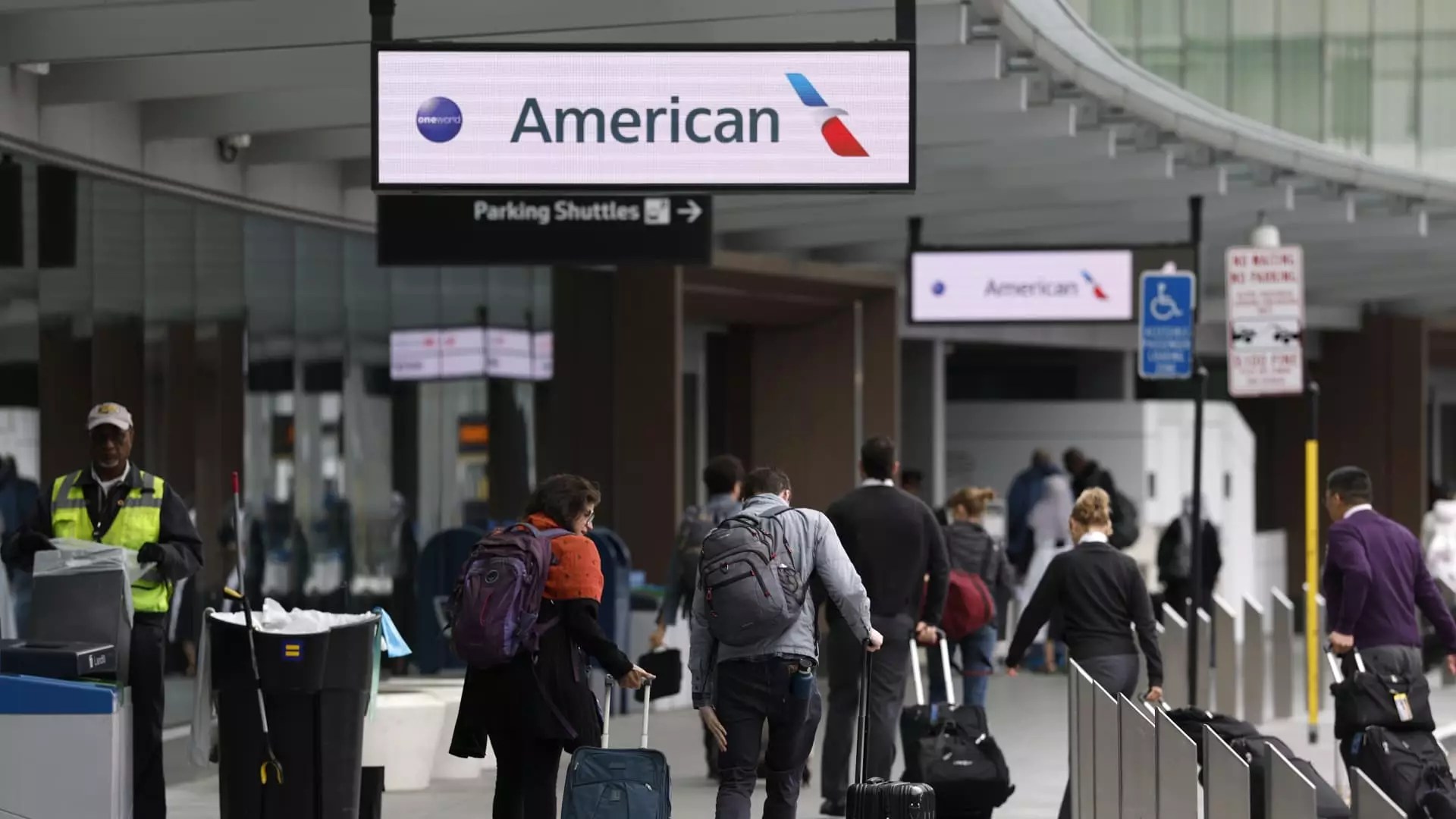Economic instability is perhaps the most elusive challenge, and the airline industry illustrates this precarious situation vividly. Recent statements from airline CEOs reveal a sobering reality: the demand for domestic travel is faltering more than initially predicted. As 2025 unfolds, projections that once soared have now been clipped, and the forecasts leave much to be desired. This downturn is not merely a fluke of market trends; it underscores broader issues such as fluctuating tariffs and the pervasive sentiment of hesitation that American consumers feel.
The Impact of Tariff Policies
One cannot overstate the damaging consequences of erratic tariff strategies on industries like aviation. President Trump’s recent trade policies have generated a ripple effect that extends to the wallets of consumers. With uncertainties looming on the economic front, many are reconsidering how they allocate their disposable income, especially for leisure travel. The challenges posed by tariffs shouldn’t solely be viewed through the lens of business. The psyche of consumers—that crucial part of the equation—plays a significant role. When Americans feel anxious about their financial future, discretionary spending, such as vacations, often takes the first hit.
Excess Capacity: The Airlines’ Predicament
As corporate giants, airlines work on narrow profit margins where overcapacity translates to perilous losses. Airlines like Delta and Southwest have announced cutbacks in their capacity growth plans and retracted optimistic financial forecasts. Such decisions stem from both economic uncertainty and lower-than-expected revenues, leading to seat shortages that pose serious existential threats. With ticket prices already in decline, airlines feel the pressure to fill their planes, forcing them to offer discounts that might not yield profitable returns.
Corporate Travel: The Canary in the Coal Mine
Corporate travel is often seen as the lifeblood of the airline industry. Business passengers, who tend to book last-minute flights and have less price sensitivity, provide airlines with robust revenues. Unfortunately, recent reports indicate a stagnation in this critical segment. As pointed out by numerous analysts, companies are revising their travel budgets downwards as economic uncertainty looms. This hesitance has a cascading effect: fewer business travelers lead to declining profits, which in turn causes airlines to reevaluate their operational strategies.
The Role of Pricing
The competition to fill aircraft in an environment of decreasing confidence has led to price adjustments that could further erode profits. As Alaska Airlines indicated, its decision to lower fares was a direct response to demand not meeting optimistic expectations. Lower airfare could attract some budget-conscious travelers but risks alienating business clientele who may perceive lower prices as a sign of declining service quality. Price sensitivity in the leisure sector does not always equate to loyalty; therefore, slashing fares could become a double-edged sword.
Consumer Sentiment: The Undercurrent of Travel Demand
Despite the dark clouds gathering over the industry, there’s a silver lining—consumer sentiment remains somewhat resilient. Travelers are indeed booking international flights, signaling a steady demand for air travel, albeit unevenly across segments. However, as Isom from American Airlines asserted, economic certainty is the bedrock for restoring consumer confidence. Until there’s clarity on economic revival, the upsurge in international travel may not entirely compensate for the struggles faced in domestic markets.
Looking Forward: Navigating the Future
In the face of these tribulations, what lies ahead for airlines is far from clear. The interplay between consumer psychology, governmental policies, and evolving market conditions will undoubtedly shape the industry’s trajectory. It would be naive to assume that airlines can merely “wait it out.” They must dynamically adapt to remain viable in an ever-turbulent landscape. The stakes are high, and with each passing day, the challenge of striking a balance between filling seats and maintaining profitability intensifies. As the narrative unfolds, the airline industry’s response in the coming months will determine not just their profitability but their sustainability in an unpredictable economy.


Leave a Reply